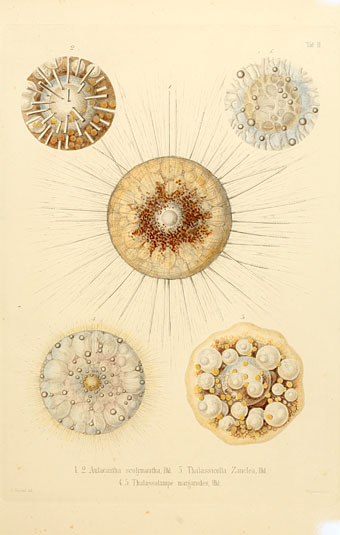
I’ve been admiring (and plundering) Ernst Haeckel’s Kunstformen der Natur (Artforms in Nature, 1904) for many years, but until this week I hadn’t thought to look for other books by the German biologist. The plates in Haeckel’s Kunstformen fascinate for the way their drawings emphasise the aesthetic qualities of the animals being studied, without taking the wild liberties one finds in early zoological books or being photographically faithful to the specimens.
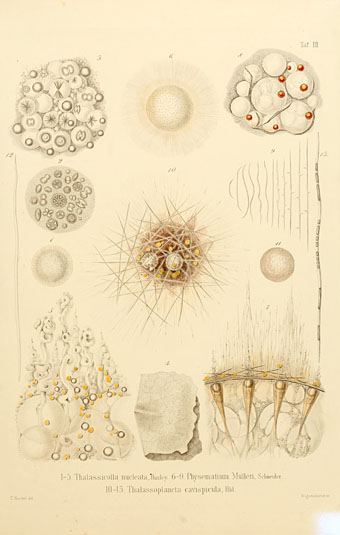
Of particular fascination are the many plates devoted to Radiolaria, tiny marine protozoa whose mineral skeletons look less like the product of living creatures than abstract decorations, crystalline growths or even pieces of alien architecture. These unusual forms were the ones that captured the imagination of René Binet, a French designer and architect who collaborated with Gustave Geffroy on a whole book of architectural and household designs derived from Haeckel’s plates. So too with Salvador Dalí who wasn’t above borrowing (or “quoting”) from Haeckel’s Radiolaria.
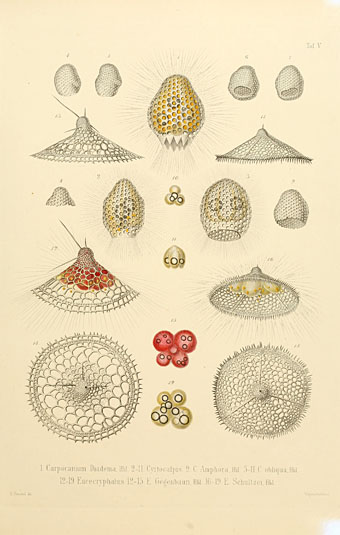
Haeckel was evidently just as fascinated with the protozoa, enough to write and illustrate a substantial monograph. Die Radiolarien (Rhizopoda radiaria): Eine Monographie (1862) is available at the Biodiversity Heritage Library and the Internet Archive in a mammoth four-volume set, a large portion of which is explanatory text. There’s also a separate volume with a selection of the plates alone which is easier to browse. These drawings show much more variety than the Kunstformen plates which represent the examples that Haeckel considered most visually appealing; they also show us how much Haeckel tailored his renderings for Kunstformen, favouring symmetry and harmony over natural imperfections. Oscar Wilde would have approved of Haeckel’s adjustments, as he writes in The Decay of Lying: “My own experience is that the more we study Art, the less we care for Nature. What Art really reveals to us is Nature’s lack of design, her curious crudities, her extraordinary monotony, her absolutely unfinished condition. Nature has good intentions, of course, but, as Aristotle once said, she cannot carry them out.”
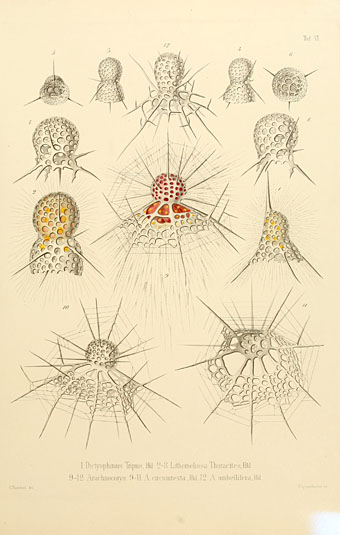
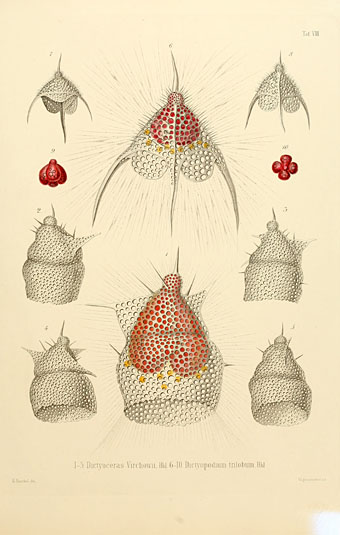
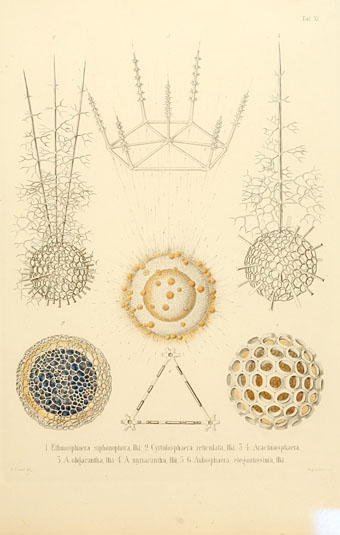
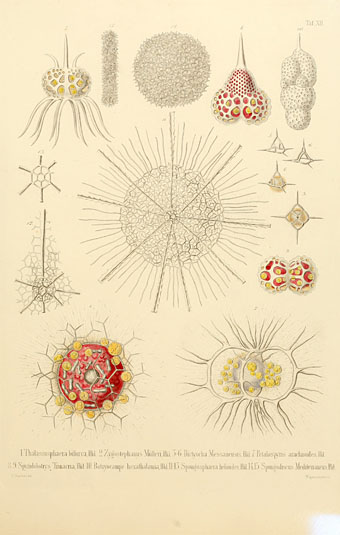
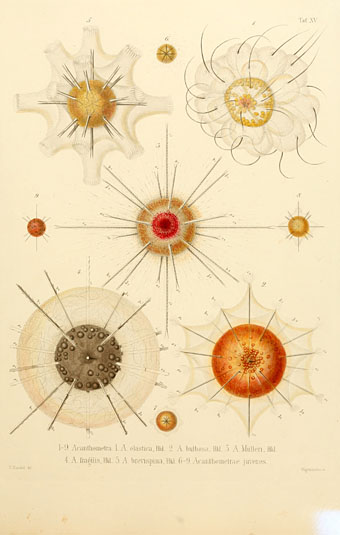
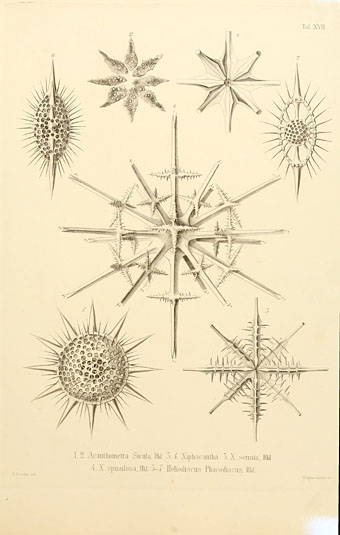
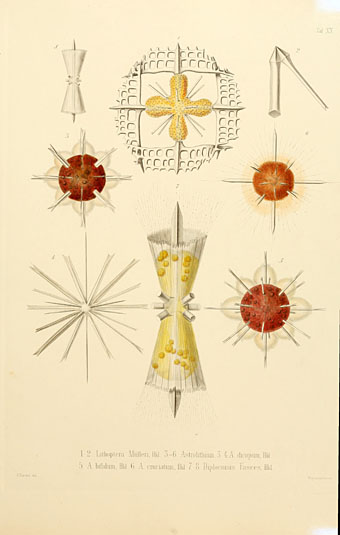
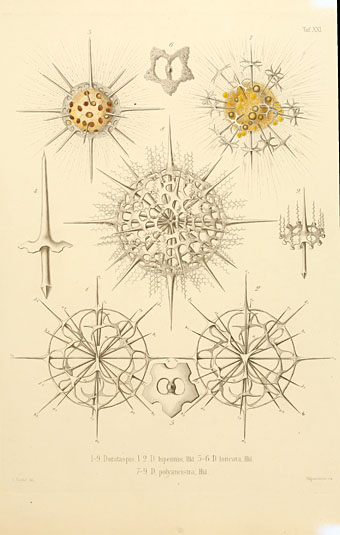
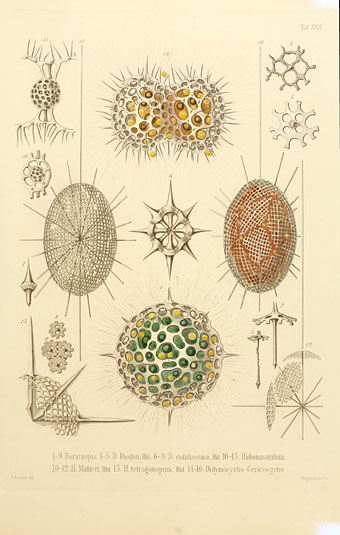
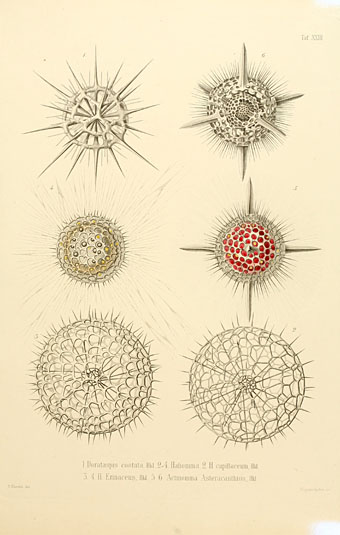
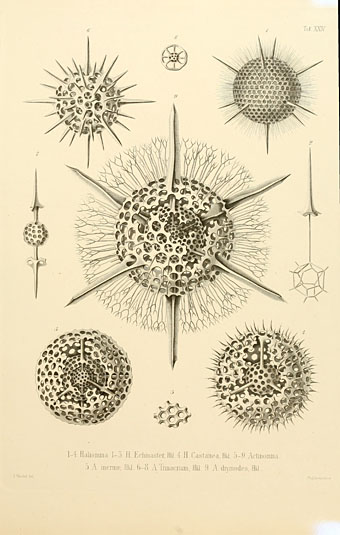
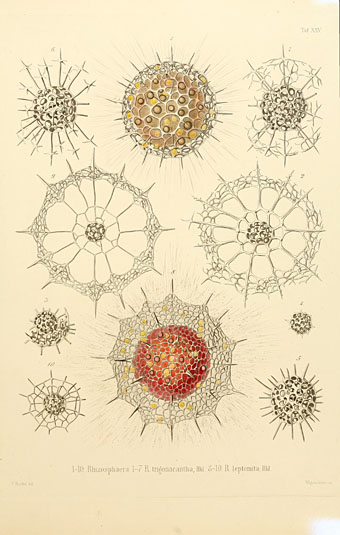
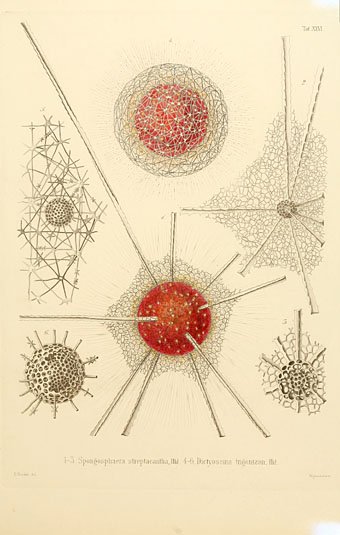
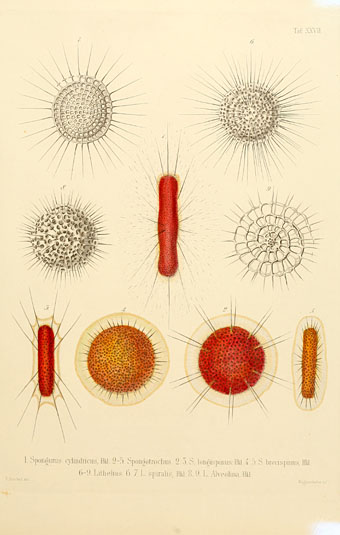
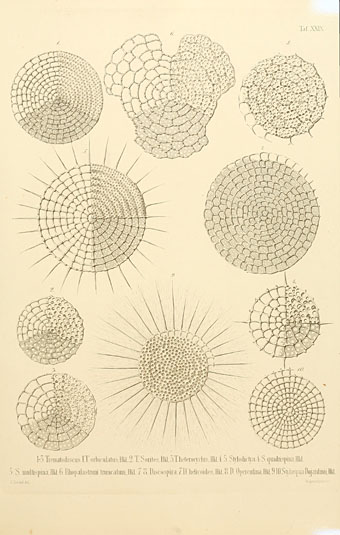
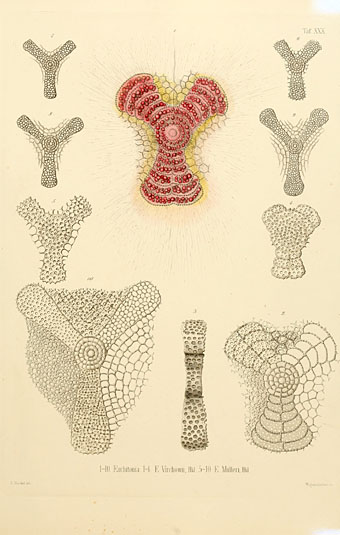
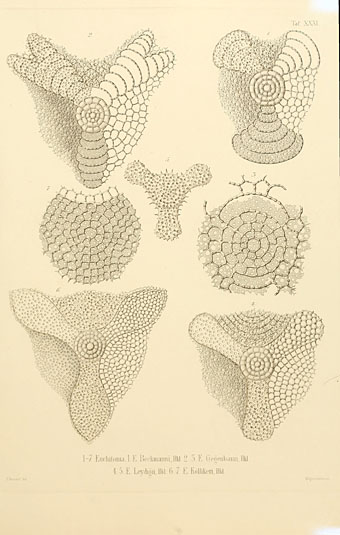
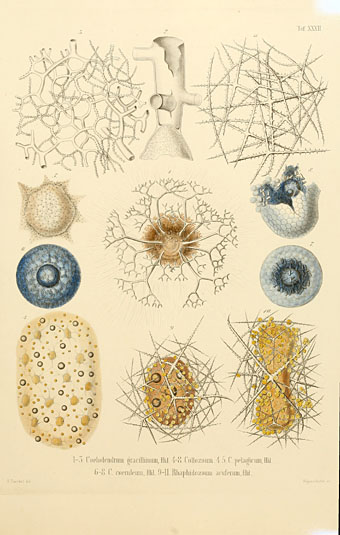
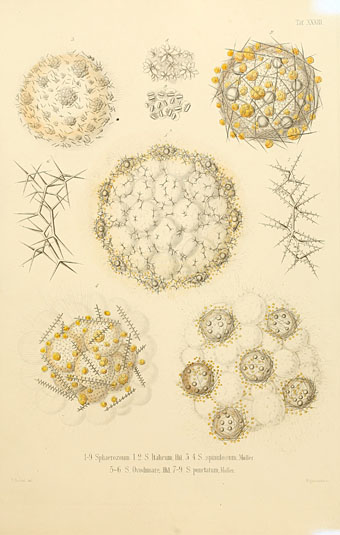
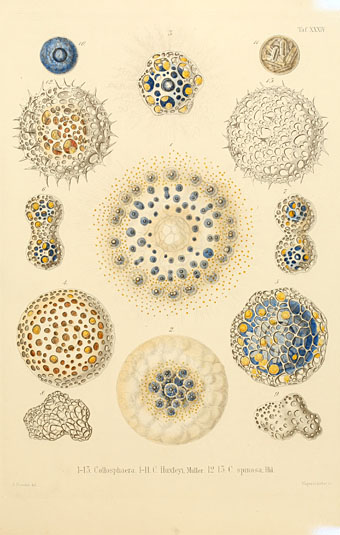
Previously on { feuilleton }
• René Binet revisited
• Esquisses Décoratives by René Binet
• Haeckel fractals

aaaaaaaaaaaaaaaaaaaand a Happy 14th Blogthday!
The following clip showing us acolytes awaiting ‘the usual’ missives from Mancunia…
> https://www.youtube.com/watch?v=PnnYk9ASJHM
*dances with diatoms in the laval flow*
Thanks :)
Beautiful!